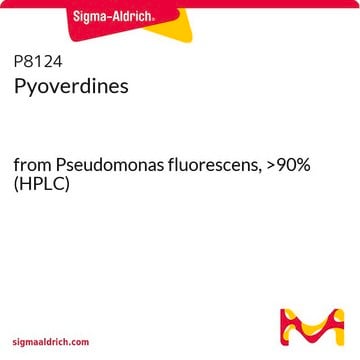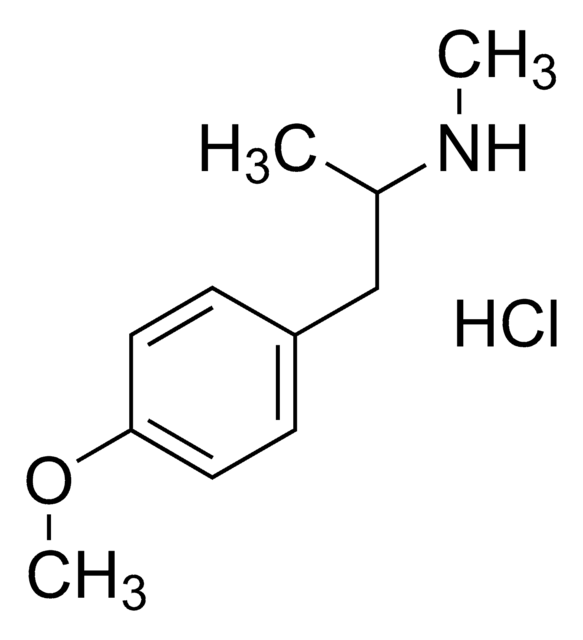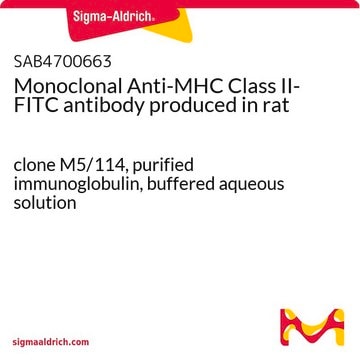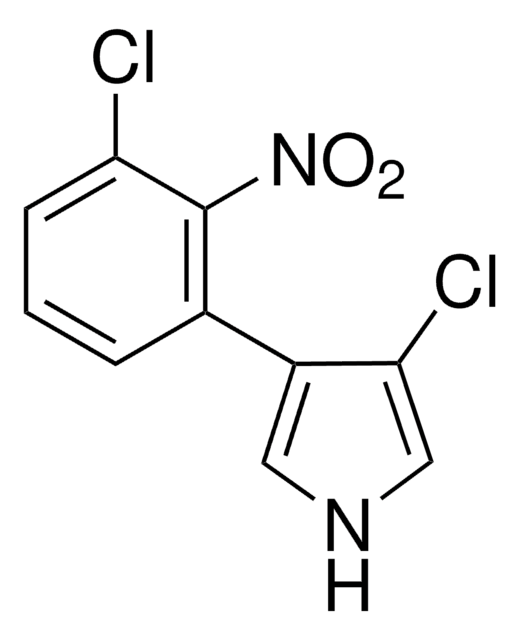The recommended storage temperature for this product is for –20°C. The stability of this product at –80°C has not been evaluated. This compound is not directly soluble in water. However, product R9532, Pyocyanin, Ready Made Solution, is a 5 mg/mL solution in DMSO. This item has a general shelf live of 2 years at –20°C. The prepared solution is not stable when stored at refrigerated temperatures. Please see the link below to review the product datasheet:
https://www.sigmaaldrich.com/deepweb/assets/sigmaaldrich/product/documents/429/027/p0046dat.pdf
P0046
Pyocyanin
from Pseudomonas aeruginosa, ≥98% (HPLC), solid, redox-active phenazine
Sinonimo/i:
5-Methyl-1(5H)-phenazinone, Pyocyanine, Sanasin, Sanazin
About This Item
Prodotti consigliati
Nome del prodotto
Pyocyanin, from Pseudomonas aeruginosa, ≥98% (HPLC)
Origine biologica
Pseudomonas aeruginosa
Livello qualitativo
Saggio
≥98% (HPLC)
Stato
solid
Solubilità
DMSO: soluble
acetone: soluble
chloroform: soluble
ethanol: soluble
Condizioni di spedizione
wet ice
Temperatura di conservazione
−20°C
Stringa SMILE
CN1c2ccccc2N=C3C(=O)C=CC=C13
InChI
1S/C13H10N2O/c1-15-10-6-3-2-5-9(10)14-13-11(15)7-4-8-12(13)16/h2-8H,1H3
YNCMLFHHXWETLD-UHFFFAOYSA-N
Azioni biochim/fisiol
Nota sulla preparazione
Avvertenze
Warning
Indicazioni di pericolo
Consigli di prudenza
Classi di pericolo
Acute Tox. 4 Oral - Eye Irrit. 2
Codice della classe di stoccaggio
11 - Combustible Solids
Classe di pericolosità dell'acqua (WGK)
WGK 1
Punto d’infiammabilità (°F)
Not applicable
Punto d’infiammabilità (°C)
Not applicable
Scegli una delle versioni più recenti:
Certificati d'analisi (COA)
Non trovi la versione di tuo interesse?
Se hai bisogno di una versione specifica, puoi cercare il certificato tramite il numero di lotto.
Possiedi già questo prodotto?
I documenti relativi ai prodotti acquistati recentemente sono disponibili nell’Archivio dei documenti.
I clienti hanno visto anche
Articoli
Bioactive small molecules for immune system signaling target identification/validation and antibiotics, antivirals, and antifungals offered.
-
①試薬の保存温度として―80℃は不適切でしょうか。 ②純水に溶解後の保存方法として、冷蔵保存することは可能でしょうか。 宜しくお願いいたします。
1 answer-
Helpful?
-
Active Filters
Il team dei nostri ricercatori vanta grande esperienza in tutte le aree della ricerca quali Life Science, scienza dei materiali, sintesi chimica, cromatografia, discipline analitiche, ecc..
Contatta l'Assistenza Tecnica.














